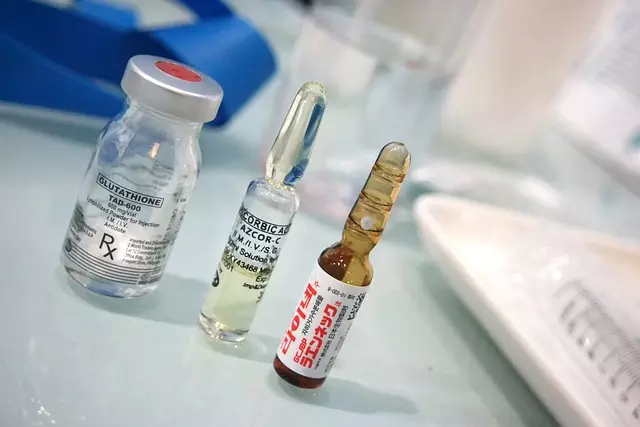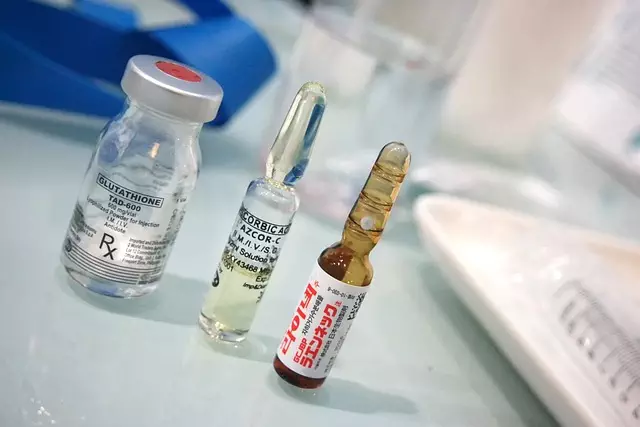Semaglutide, a GLP-1 receptor agonist, offers an innovative, once-weekly injection for managing type 2 diabetes and aiding weight loss. This minimally invasive treatment alternative is gaining popularity due to its convenience, efficacy in lowering HbA1c levels, and ability to mimic natural hormones. Clinical studies validate its safety and dual benefits for diabetes and obesity, with patient success stories showcasing improved health and quality of life. While side effects like nausea exist, the semaglutide injectable form stands out from traditional treatments and continues to be explored for personalized medicine solutions.
“Discover a transformative approach to diabetes management with semaglutide, a groundbreaking glucagon-like peptide-1 (GLP-1) receptor agonist. This article explores the rise of minimally invasive treatments and how semaglutide’s injectable form offers a convenient, effective solution for patients.
We delve into its mechanism, clinical studies confirming its safety and efficacy, and real-world success stories. Compare semaglutide with other diabetes treatments and understand its potential future in personalized medicine. Uncover why this innovative therapy is revolutionizing patient care.”
Understanding Semaglutide: A Glucagon-Like Peptide-1 Receptor Agonist

Semaglutide is a highly effective treatment option for type 2 diabetes, particularly in its injectable form. It belongs to a class of medications known as glucagon-like peptide-1 (GLP-1) receptor agonists, which mimic the effects of a natural hormone produced by the body. By stimulating GLP-1 receptors, semaglutide enhances insulin secretion and suppresses glucagon release, leading to improved blood sugar control.
The injectable form of semaglutide offers a minimally invasive treatment approach. It is typically administered once weekly, making it convenient for patients compared to more frequent injections. This medication has shown remarkable results in lowering HbA1c levels (a measure of long-term blood sugar control) and supporting weight management, contributing to its growing popularity as a diabetes treatment.
The Rise of Minimally Invasive Treatments: Benefits and Patient Perspective

The healthcare industry is witnessing a significant shift towards minimally invasive treatment options, and semaglutide, in its injectable form, is at the forefront of this revolution. This novel approach has transformed the way we manage various medical conditions, offering patients several advantages over traditional, more invasive procedures. By administering semaglutide via injection, healthcare providers can target specific issues with precision, reducing the need for extensive surgeries or frequent interventions.
For patients, minimally invasive treatments like semaglutide provide a more comfortable and quicker recovery path. The convenience of a simple injection, often performed in an outpatient setting, is a significant draw for many individuals seeking to manage chronic conditions effectively. This method also minimizes scarring, infection risks, and post-operative pain, making it an increasingly appealing choice for those who value a faster return to their daily routines.
Exploring Semaglutide's Injectable Form: Ease and Efficacy in Diabetes Management

The semaglutide injectable form offers a convenient and effective approach to diabetes management, revolutionizing the way patients with type 2 diabetes control their blood sugar levels. This once-weekly injection provides a simple solution for individuals who may find traditional insulin regimens cumbersome. Semaglutide’s ability to mimic the effects of a natural hormone makes it a game-changer in terms of patient compliance and overall treatment adherence.
Compared to other treatments, semaglutide injections stand out due to their ease of administration and consistent efficacy. Patients can say goodbye to the hassle of frequent needle pricks typically associated with insulin therapy. The injectable form allows for better control over blood sugar, often leading to reduced HbA1c levels, without the need for complex calculations or meticulous monitoring that traditional insulin regimens demand.
How Semaglutide Works: Mechanisms and Target Actions

Semaglutide, in its injectable form, is a novel treatment option that mimics the actions of a natural hormone, GLP-1 (glucagon-like peptide-1). This hormone is secreted in response to food intake and plays a crucial role in regulating blood sugar levels. By administering semaglutide as an injection, this medication can effectively lower high blood sugar (hyperglycemia) in people with type 2 diabetes.
The primary mechanism of action involves enhancing insulin secretion when blood sugar levels are high, while also suppressing the release of glucagon, a hormone that raises blood sugar. This dual action helps to improve glycemic control. Additionally, semaglutide promotes feelings of satiety, leading to reduced food intake and subsequent weight loss—making it not just an effective diabetes treatment but also a potential tool in the management of obesity.
Clinical Studies: Evaluating the Safety and Efficacy of Semaglutide Injectables

Clinical studies have played a pivotal role in understanding the safety and efficacy of semaglutide injectables as a minimally invasive treatment option. These trials have meticulously evaluated the drug’s impact on various health parameters, particularly in managing type 2 diabetes and obesity. Researchers have focused on assessing not only its blood sugar-lowering effects but also its potential to promote weight loss without significant side effects.
The studies have demonstrated that semaglutide injectables can lead to meaningful improvements in glycemic control while simultaneously aiding in significant weight reduction. This dual benefit makes semaglutide a promising candidate for individuals seeking better management of both diabetes and their body weight. The clinical data also highlights the generally well-tolerated nature of this treatment, further emphasizing its potential as a safe and effective minimally invasive option.
Real-World Applications: Patient Success Stories and Treatment Outcomes

In real-world settings, the minimally invasive treatment option with semaglutide has proven highly effective, particularly in managing type 2 diabetes. Patient success stories highlight reduced HbA1c levels and significant weight loss, often leading to improved overall health and quality of life. These outcomes are attributed to the unique properties of semaglutide’s injectable form, which mimics natural human hormones, promoting satiety and regulating blood sugar levels efficiently.
Many patients have shared their positive experiences with this treatment, noting ease of administration through once-weekly injections and minimal side effects compared to other diabetes medications. The consistent delivery of semaglutide has shown promise in helping individuals achieve and maintain optimal glycemic control, making it a valuable tool for healthcare professionals in personalizing diabetes care.
Comparison with Other Diabetes Treatments: Positives and Drawbacks

Semaglutide, in its injectable form, offers a fresh perspective in diabetes management compared to traditional treatments. One of its key advantages lies in its mechanism of action; as a glucagon-like peptide-1 (GLP-1) receptor agonist, it promotes insulin secretion and suppresses glucagon release, mimicking the body’s natural response to meals. This approach differs from other diabetes medications that often focus on reducing blood sugar levels through various means, sometimes causing side effects like hypoglycemia.
While semaglutide demonstrates superior efficacy in blood glucose control, it is not without drawbacks. Common side effects include nausea and vomiting, particularly during the initial stages of treatment. Additionally, its cost may be a barrier for some patients compared to other generic diabetes medications. However, its once-weekly administration schedule makes it more convenient than daily injections, contributing to improved patient adherence.
Future Prospects: Research, Development, and Personalized Medicine

The future of minimally invasive treatments using semaglutide looks promising, with ongoing research and development focusing on improving patient outcomes and quality of life. Scientists are exploring the potential of this injectable form of semaglutide to target specific medical needs, paving the way for personalized medicine. This approach could mean tailored treatments for individual patients, offering greater efficacy and reduced side effects.
Clinical trials are investigating advanced delivery methods and formulations, aiming to optimize the benefits of semaglutide while minimizing risks. The goal is to create more convenient and accessible treatment options, making it easier for patients to manage their health effectively. With continuous research, we can expect to see further advancements in the medical community’s understanding and utilization of semaglutide, benefiting those seeking minimally invasive treatment solutions.



